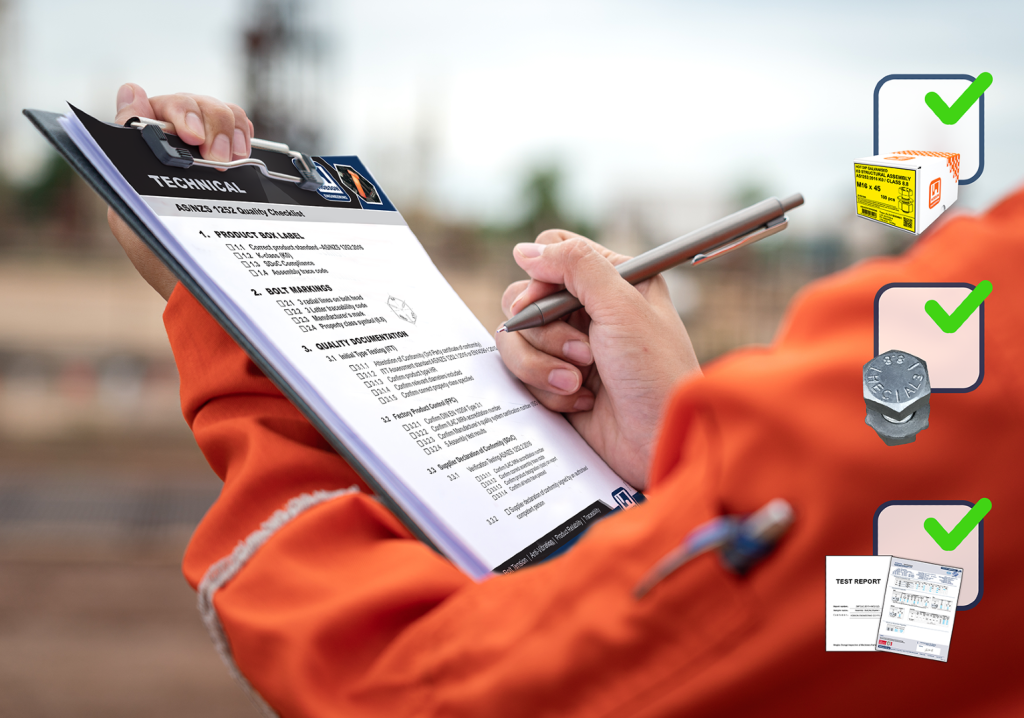Despite new product standards being introduced seven years ago, Australia’s construction sector is awash with outdated structural bolts that don’t comply. Using them could prove a very expensive mistake.
Australia’s leading supplier of high-quality bolt assemblies has warned that many construction projects are still carried out using structural bolts that don’t adhere to updated standards.
Such products violate the terms of the National Construction Code (NCC) and are more likely to fail, potentially causing structures to collapse or require complete rebuilds.
“There are a lot of bad products out there, and I’ve seen the damage they can do,” said Alex Sharp, a mechanical engineer at Australia’s leading supplier of high-quality bolts and fasteners, Hobson Engineering.
“Anyone ordering structural bolts should insist on seeing documentation from the supplier that proves they’re fully compliant with the latest standard and fit for purpose. Failing to do so could be a very expensive mistake.”
Updated standards
The relevant standard, AS/NZS 1252.1, was comprehensively updated in 2016 for the first time in 33 years to improve safety and reduce the number of bolts failing. Until that change, bolts, nuts and washers were tested individually rather than as one complete assembly.
It meant the units weren’t properly assessed in field conditions. Even if each element was deemed compliant, it didn’t necessarily follow that they’d be strong enough when combined.
The 2016 revision required products to be evaluated thoroughly in realistic situations, giving engineers more confidence that they’d be robust enough to achieve minimum tensions.
However, seven years on, failures are still too common because elements of the industry have dragged their feet in adjusting their procedures, despite the amendments being incorporated into the NCC in 2022.
“It should have been adopted straightway,” said Sharp. “But we’re still seeing products being imported that don’t comply. We want to educate all stakeholders about the risks that they pose. If a certifier spots one, they can insist the structure be rebuilt.
“A beam installation, for example, may look fine, but will it last 100 years? Would you want to risk your reputation, or even a criminal prosecution, if a non-complaint structural bolt assembly fails?”
Avoiding catastrophe
Even if it doesn’t immediately fail, gaps between objects bolted together could emerge over time if the fitting can’t cope with the clamp load. Sharp warns that just a one-millimetre separation could cause a catastrophic event to occur.
But recognising a potentially hazardous, non-compliant bolt isn’t always easy.
“Not all suppliers are transparent about whether their products meet the new standard,” he said. “And an overseas factory may claim that a bolt is compliant, but then fail to produce the necessary documentation.
“That’s why it’s absolutely vital that design engineers don’t just indicate a size for the bolts required on their plans but specify the actual standard too, so there’s complete avoidance of doubt.”
Hobson supplies fasteners, bolts, nuts, allthread rod, screws and anchors to industries including mining, construction, oil, and manufacturing.
The company undertakes extensive research and development into the performance of its products at its state-of-the-art testing laboratory at Eastern Creek, New South Wales, which is fully accredited by the National Association of Testing Authorities.
It gives demonstrations to engineers to help them understand testing and compliance procedures and supplies an invaluable compliance checklist for procuring and using products.
Confidence through transparency
It also provides an additional element of quality control for even greater transparency.
“All of our AS1252.1 structural bolts have a traceable code on their head, so that if a certifier or developer wants to check compliance, they can simply visit our website to see all the documentation,” Sharp said. “It’s not a requirement of the standard, but it’s extremely convenient, as it’s a permanent record of exactly where it was sourced from and the standards it meets.”
To be completely confident a component is fully compliant, it’s critical for construction firms and design engineers to insist on independently verified test reports from both the factory and the supplier.
“But today, everything is made overseas, so the factories don’t have a responsibility to adhere to our laws. Importers therefore have to take on that responsibility and be held accountable for everything they ship over.”
Luckily, progress is being made as more companies recognise the benefits of the 2016 amendment.
“I can honestly say that I haven’t heard of a single compliant structural bolt failing,” Sharp said. “Which is exactly as it should be — as the acceptable failure rate is zero.”


